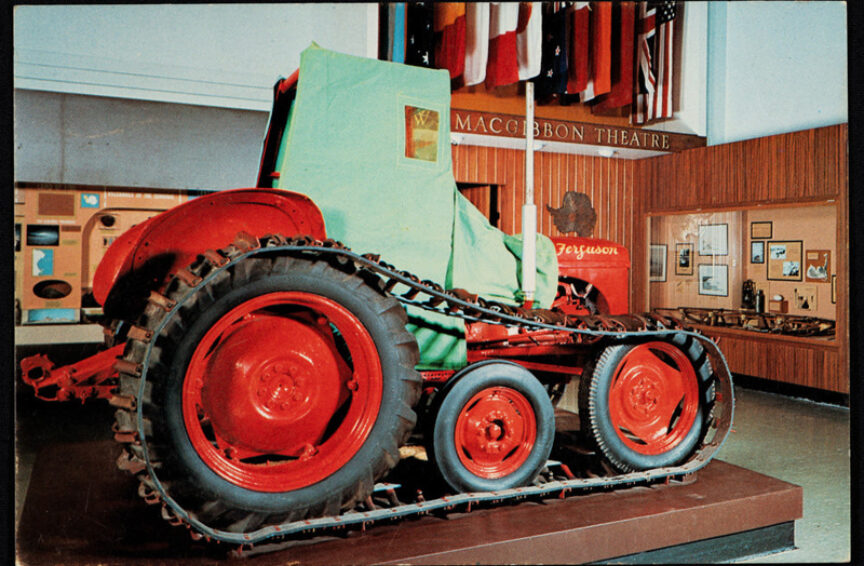PO Box 95
Lyttelton 8841
Te Ūaka recognises Te Hapū o Ngāti Wheke as Mana Whenua and Mana Moana for Te Whakaraupō / Lyttelton Harbour.

Portrait of Sir Ernest Shackleton, presented by him to the Lyttelton Branch of the British and Foreign Sailors Society. Possibly 1907?
Te Ūaka The Lyttelton Museum ref 14546.1
https://www.teuaka.org.nz/online-collection/1135276
Shackleton and the “Endurance”
With the incredible news on March 10 that the Antarctic exploration ship “Endurance” has been found three kilometres deep in the Weddell Sea, we highlight this special item from our collection - a portrait of Sir Ernest Shackleton, presented by the explorer himself to the Lyttelton Branch of the British and Foreign Sailors Society, possibly in 1907. We would love to hear from anyone who has information that can confirm when Shackleton donated his portrait.
The team of Endurance22, led by the Falklands Maritime Heritage Trust, are responsible for the incredible achievement of finding and filming the vessel. The ship is in a remarkably well preserved condition due to the lack of wood eating organisms in the freezing temperatures. Largely intact, she lies approximately six kilometres from the coordinates originally taken by sextant by New Zealander Frank Worsley.
Shackleton took part in the voyage of the “Discovery” in 1901 - 1903 led by Robert Falcon Scott, during which he, Scott and Wilson all suffered significant ill health due to snow blindness, frostbite and scurvy in a march towards the Pole. Once back at the ship, Shackleton was sent by Scott on an early return to New Zealand to convalesce. The expedition highlighted the differences in the two men’s personalities and leadership styles; Shackleton was popular among the men, strong under pressure, and Scott possibly resented that.
That journey clearly fuelled Shackleton’s determination to return to Antarctica; after a few years spent in journalism and politics, he achieved this ambition with the 1907 - 1909 Nimrod expedition. Together with Wild, Marshall and Adams, Shackleton attained a new southern latitude just 112 kms shy of the Pole and found the Beardmore Glacier and the Polar Plateau. Other members of the expedition – Edgeworth David, Douglas Mawson, and Alistair Mackay, thought they identified the South Magnetic Pole and made the first successful ascent of Mount Erebus.
On his return to England, Shackleton was hailed a hero, gave lectures and made many social appearances; activities which he also undertook in New Zealand. His fame enabled him to fundraise, mainly from private donations, for his next expedition; the grandly named “Imperial Trans-Antarctic Expedition”, 1914–1917. The goal was to cross Antactrica from the Weddell to the Ross Sea, via the South Pole. Two ships were involved, the “Endurance” captained by Frank Worsley, and the “Aurora”, led by Lieutenant J. Stenhouse.
Disaster struck in January 1915 when the “Endurance” became stuck in severe conditions in the ice floe of the Weddell Sea. The hope was that the ship would be released from the ice’s frozen grip in spring, but in October it became obvious that she was being crushed by the extreme pressure and in November she sank beneath the surface. Photographer Frank Hurley documented the ship's demise and the men’s plight camping on the constantly moving and shrinking floes in many haunting images.
The incredible story of the men’s perilous lifeboat journey to Elephant Island, survival there and subsequent 1300 km journey across the open sea to South Georgia and ultimate rescue, is one for another day. The hardships of those experiences did not diminish Shackleton’s passion for the South and in 1921, despite health problems exacerbated by drinking, he embarked from England on the “Quest”. Tragically, he died suddenly of a heart attack on board that ship in South Georgia on 5 January 1922, at the age of just 47, and was buried there at Grytviken. How fitting that his ship should be found 100 years after his death.
Lyttelton Museum Historical Society member Dr Wolfgang Rack was involved as a scientist in the Weddell Sea Expedition 2019 which paved the way for the success of the Endurance22 expedition.
Our Committee secretary, Dr Ursula Rack, a passionate Antarctic historian can be heard in the following interview about Shackleton and the recent discovery of the “Endurance”. Previously, after giving a lecture on an Antarctica Expedition cruise ship, she was offered help with high resolution satellite images which were then used in the 2019 and 2022 expeditions.
Listen to Dr Ursula Rack interview (mp3 audio)

